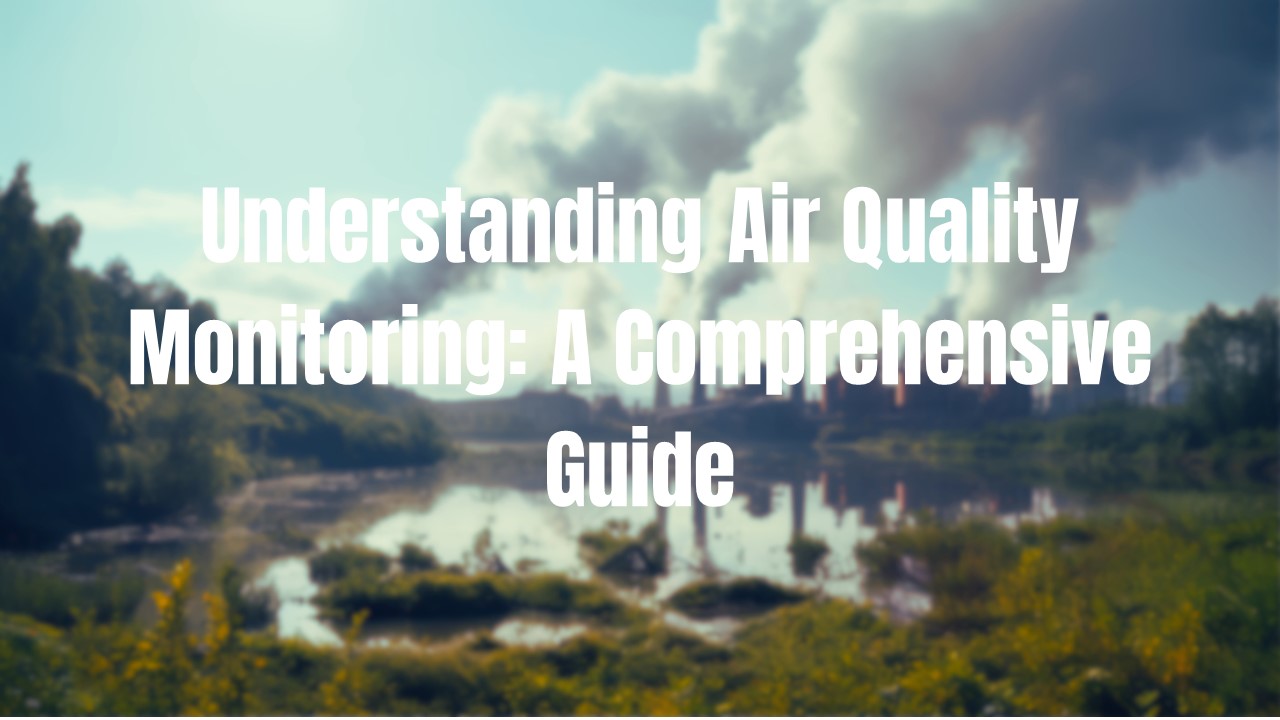Understanding Air Quality Monitoring: A Comprehensive Guide - PowerPoint PPT Presentation
Title:
Understanding Air Quality Monitoring: A Comprehensive Guide
Description:
This PowerPoint presentation simplifies the topic of air quality monitoring, offering clear insights into its significance and benefits. Tailored for a wide audience, it provides practical information for individuals and organizations to understand and address air pollution challenges. – PowerPoint PPT presentation
Number of Views:6
Title: Understanding Air Quality Monitoring: A Comprehensive Guide
1
Understanding Air Quality Monitoring A
Comprehensive Guide
2
For our health and wellbeing, air quality is
essential. But both indoor and outdoor air can
contain invisible pollutants. With the use of air
quality monitors, we can measure these pollutants
and use the information to make more informed
decisions about our environment. Air quality
monitors are electronic devices that detect and
measure the concentration of various pollutants
in the air. These monitors come in various forms,
from compact, portable units for personal use to
sophisticated fixed-site stations used for
large-scale air quality monitoring.
3
Types of Air Quality Monitors
Indoor Air Quality Monitors These monitors are
designed for use within homes, offices, and other
indoor spaces. They typically measure pollutants
like particulate matter (PM2.5 and PM10), carbon
monoxide (CO), volatile organic compounds (VOCs),
and formaldehyde (HCHO).
Outdoor Air Quality Monitors These monitors are
used for environmental monitoring and can be
elaborate fixed-site stations or smaller portable
units. They measure pollutants like ozone (O3),
sulfur dioxide (SO2), and nitrogen dioxide (NO2),
along with PM and CO.
4
Benefits of Using Air Quality Monitors
Track Air Quality Trends Monitors allow you to
track changes in air quality over time, helping
you identify potential improvements or areas of
concern. By visualizing pollution levels and
trends over time, communities can advocate for
stronger environmental policies, support
sustainable practices, and engage in collective
efforts to improve air quality.
Health Protection Air quality monitors provide
real-time data on pollutant levels, enabling
individuals and communities to take proactive
measures to reduce exposure to harmful
pollutants. By avoiding areas with poor air
quality or adjusting daily activities
accordingly, people can minimize the risk of
respiratory illnesses, cardiovascular diseases,
and other health issues associated with air
pollution.
5
Regulatory Compliance Businesses and industries
can use air quality monitors to ensure compliance
with environmental regulations and standards. By
continuously monitoring emissions and pollutant
levels, companies can identify areas for
improvement, implement pollution control
measures, and avoid fines or penalties for
non-compliance.
Emergency Response During environmental
emergencies such as wildfires, industrial
accidents, or chemical spills, air quality
monitors play a crucial role in assessing the
extent of pollution and guiding emergency
response efforts. By providing timely and
accurate data on pollutant levels, authorities
can issue public health advisories, evacuate
affected areas, and deploy resources to minimize
health risks and environmental damage.
Identify Pollution Sources By monitoring air
quality fluctuations, you can pinpoint potential
sources of pollutants within your home or
surroundings.
6
Inform Public Health Measures Public health
agencies utilize air quality monitor data to
issue warnings about unhealthy air quality events
and guide preventative measures. Researchers can
analyze trends in air pollution exposure and
health outcomes, identify vulnerable populations,
and develop targeted interventions to address
health disparities and reduce the impacts of air
pollution on communities.
Efficient Resource Allocation Air quality data
collected from monitoring networks can inform
resource allocation and decision-making processes
at local, regional, and national levels.
Governments and urban planners can use this
information to prioritize investments in
pollution control measures, transportation
infrastructure, and public health initiatives
aimed at improving air quality and reducing
pollution-related costs.
7
Choosing an Air Quality Monitor
- When selecting an air quality monitor, consider
the following factors - Pollutants of Interest Identify the specific
pollutants you want to monitor based on your
concerns (e.g., indoor allergens, outdoor smog). - Features Consider features like real-time
readings, data logging capabilities, and air
quality index (AQI) display. - Portability Choose a portable monitor for
personal use or a fixed-site monitor for
continuous monitoring of a specific location.
8
Conclusion
In conclusion, air quality monitoring plays an
important role in protecting our health and the
environment. By using advanced technologies to
track pollution levels, we can make informed
decisions to reduce exposure and improve air
quality. It's a shared responsibility that
requires collaboration and commitment from
individuals, communities, and governments alike.
Air quality monitoring is essential for
protecting our health and environment. With
Arabcal leading the way as the premier air
quality monitor supplier in the UAE, we have
access to innovative solutions for tracking
pollution levels and making informed decisions.

